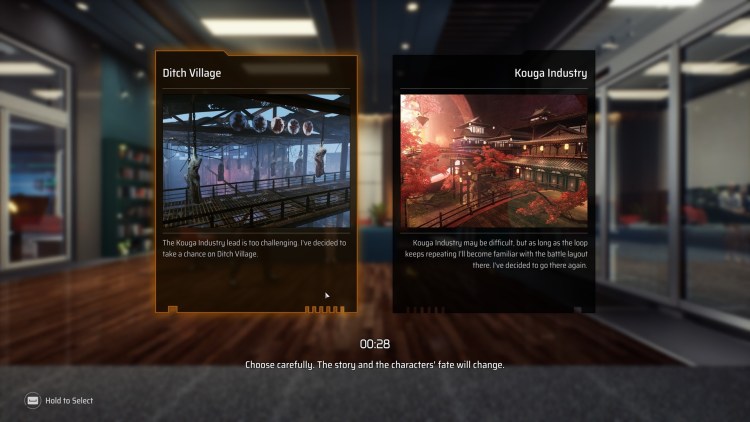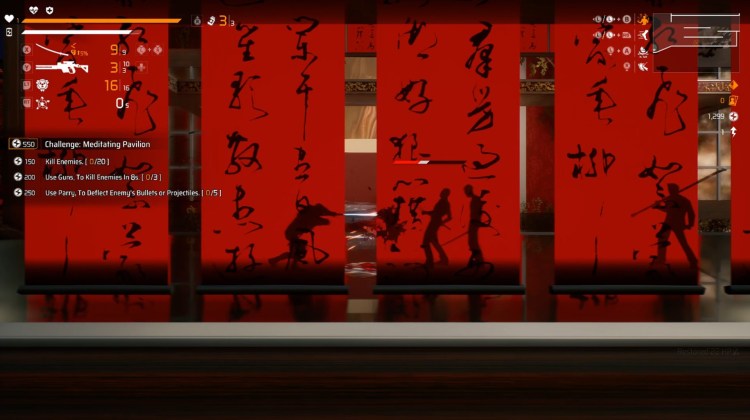Loopmancer, a roguelike side-scroller from developer eBrain Studio and publisher Xu, promises frantic action, challenging combat, and a lot of deaths as you try to make it all the way to the end. To be fair, the game did manage to offer the thrills at certain points. Sadly, it’s also bogged down by a woefully banal story and a mechanic that gets tiresome as time goes on.
Loopmancer follows the story of Xiang Zixu, an investigator who’s on the trail of a kidnapped reporter. Shortly after starting the campaign, you’ll meet a gang leader named Wei Long, the primary suspect in the reporter’s disappearance. A chase ensues where you’ll battle lots of baddies (more on combat later). Then, with the challenge becoming insurmountable, Zixu gets killed.
Reliving the same day
The next scene shows Zixu back at his apartment. A police officer then contacts him telling him of a case: the kidnapped reporter. Yes, you’re stuck in a time loop, reliving the same day over and over. Not only that, but Zixu continuously dreams of the day he lost his wife and daughter in an accident.
The time loop concept does work when you think about it. For instance, one of Zixu’s deaths might occur just as he’s about to catch Wei Long, only to get shot by a sniper. In a subsequent run, this knowledge leads to a warning from a passing black cat, allowing Zixu to evade the shot.
Loops and level design
There’s also a more practical application, such as when you’re presented with dilemmas on the next level that you’ll go to. For example, the second level is a choice between Ditch Village or Kouga Industry. In my haste, I went with Kouga Industry, only to get drubbed by teleporting bionic ninjas and towering mechs.
On the next run, you could opt to head to Ditch Village instead (which might be easier), or you could keep trying to progress further in Kouga Industry until you learn the general level design. In another section, there’s an option to choose a character that can be saved. Assuming you picked the first character, you’ll have to finish that level within the time limit if you wish to rescue the other person.
Loopmancer‘s stages are varied enough; some might even dazzle you in this side-scrolling affair. Featuring cyberpunk themes, you’ll notice glittering cities, abandoned villages, and majestic temples (complete with a giant robot looming in the distance).
The game also has a nifty quirk where areas can slightly change depending on your runs/deaths. Using the first zone as an example, there are major sections (i.e., the pavilion overlooking the parade, the warehouse, and the highway), but the layouts are altered slightly. In one attempt, the path might be clear and all you need to do is double-jump to cross a gap. In another, a truck might block the road, and you’d have to grapple to the opposite side. Platforming is also a given, as the stages in the game tend to be filled with climbable ledges, grapple points, moving objects, and countless traps.
Frantic combat
Naturally, Loopmancer relies heavily on frantic, fast-paced combat. Missions have numerous enemies ranging from the aforementioned bionic ninjas and mechs to poison-spitting creatures and mutant abominations. Your romps are often punctuated by boss fights, and they tend to have some punishing abilities. One can rain down a barrage of missiles from afar, while another will slice and dice his way like a peerless Ronin. Given that this is a roguelike, a single death brings you all the way back to the beginning of the run. You’ll lose your credits/cash and in-mission buffs, but you do keep Cores and Mementos used to unlock skill tree perks.
To help you on your journey, you’ve got four different kinds of gear pieces: a melee weapon, ranged weapon, gadget/throwable item, and skill move/augment. Melee weapons even have an “Overkill” move, a flashy attack where the screen turns red, that’s usable only after you’ve hit enemies multiple times without taking damage. Swapping between these moves/items is smooth and near-instantaneous, so you can chain your hits and keep foes at bay. There are also other actions, like a dodge/backdash to evade attacks, grappling to reach higher ledges or bypass enemies, and a few extra skills/perks that can be unlocked.
Unfortunately, my main gripe with combat is that your equipment rarely, if ever, gets interesting. Although there are a dozen or so weapons of each type, only a select few are truly worthwhile (i.e., the Wukong’s Rod or katanas are great melee weapons to have). The same goes for ranged weapons, where heavy cannons seem to pack the punch that other firearms lack. As for gadgets, I’ve managed to keep the Auto Turret, and it’s served me well during the course of my playthrough since it shoots foes while I’m slashing them. As such, battles and encounters can become fairly repetitive. The same can also be said when it comes to boss fights due to how a few of them, including the final boss, have easily recognizable patterns.
In any case, you may upgrade your tools using credits, but this mechanic is also rather simplistic. All types have upgrades that increase damage, with only a select few discernable differences (i.e., lowering the Overkill hit requirement for melee weapons or lowering the cooldown for augments). There’s also a skill tree that’s accessible in Zixu’s apartment (whenever your character perishes). These tend to be useful, though, including an instant revive (once per level), projectile deflection, and extra health potions.
Cheesiness galore
During the first few hours of playing Loopmancer, I was mostly trying to understand the mechanics while learning the intricacies of combat. There were instances when mobs could be cheesed (i.e., climbing on another ledge and causing them to lose aggro), and moments that were downright annoying. Yes, I’ve had several unfortunate mishaps where Zixu gets knocked back by an enemy’s attack only to fall on some exploding barrels, traps, or speeding vehicles. It was also possible to progress in short bursts to obtain Cores, the currency used to unlock skill tree perks. Once I had a decent number of health potions and a few ways to negate damage, it was all a matter of getting the right buffs and weapons for a perfect run.
Still, the cheesiest part of Loopmancer is its story. It went from being an interesting take owing to the cyberpunk themes to a woefully contrived and poorly-written narrative. From expressionless characters and ridiculous voice acting, the cutscenes were enough to make me zone out. Think of the corniest tropes and lines that you remember from an RPG or anime and you’ll know what I mean. There’s a way to make subsequent runs satisfying and engaging, akin to what unfolds as you progress further in Hades or Deathloop, but Loopmancer falters in this regard.
And, perhaps, this is what Loopmancer is. It’s a stylish side-scrolling action game with flashy sequences and locales, mixed with challenging and sometimes frustrating combat, all combined with a lot of fluff and simplified mechanics that make it rough around the edges.













Published: Jul 13, 2022 09:00 am